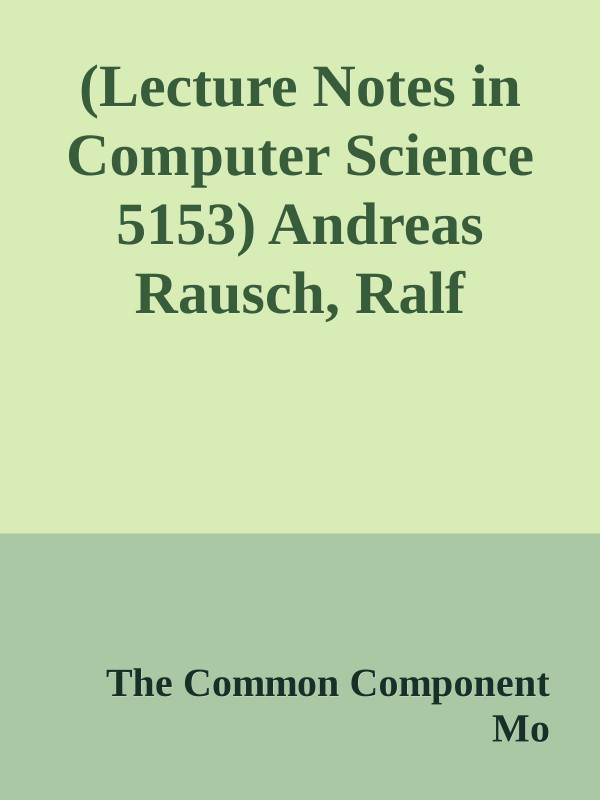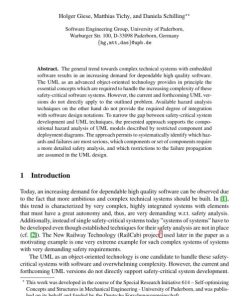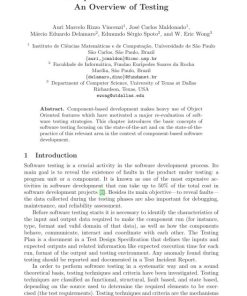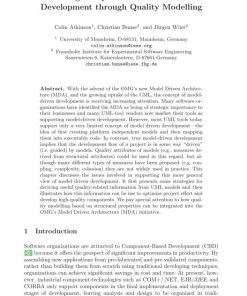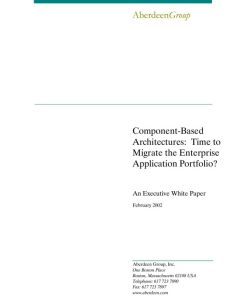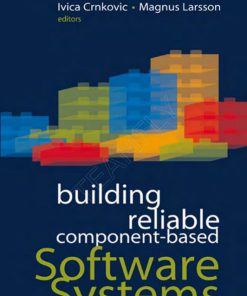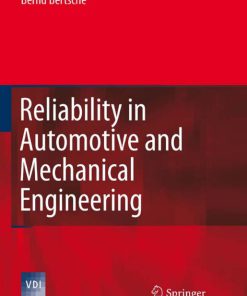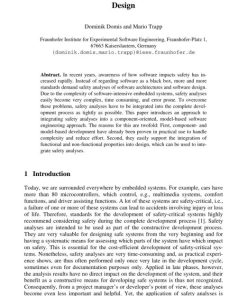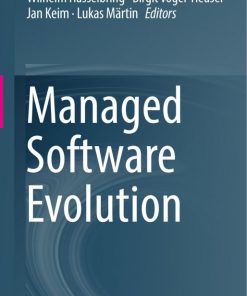The Common Component Modeling Example Comparing Software Component Models 5153 1st Edition by Andreas Rausch, Ralf H Reussner, Raffaela Mirandola Frantisek Plasil ISBN 3540852883 9783540852889
$50.00 Original price was: $50.00.$25.00Current price is: $25.00.
Authors:The Common Component Mo , Series:IT & Computer [334] , Tags:Computer Engineering; Information Technology , Author sort:Mo, The Common Component , Languages:Languages:eng , Published:Published:Aug 2007 , Publisher:Springer , Comments:Comments:This work is subject to copyright. All rights are reserved, whether the whole or part of the material is concerned, specifically the rights of translation, reprinting, re-use of illustrations, recitation, broadcasting, reproduction on microfilms or in any other way, and storage in data banks. Duplication of this publication or parts thereof is permitted only under the provisions of the German Copyright Law of September 9, 1965, in its current version, and permission for use must always be obtained from Springer. Violations are liable to prosecution under the German Copyright Law.
The Common Component Modeling Example Comparing Software Component Models 5153 1st Edition by Andreas Rausch, Ralf H Reussner, Raffaela Mirandola Frantisek Plasil – Ebook PDF Instant Download/Delivery. 3540852883, 9783540852889
Full download The Common Component Modeling Example Comparing Software Component Models 5153 1st Edition after payment
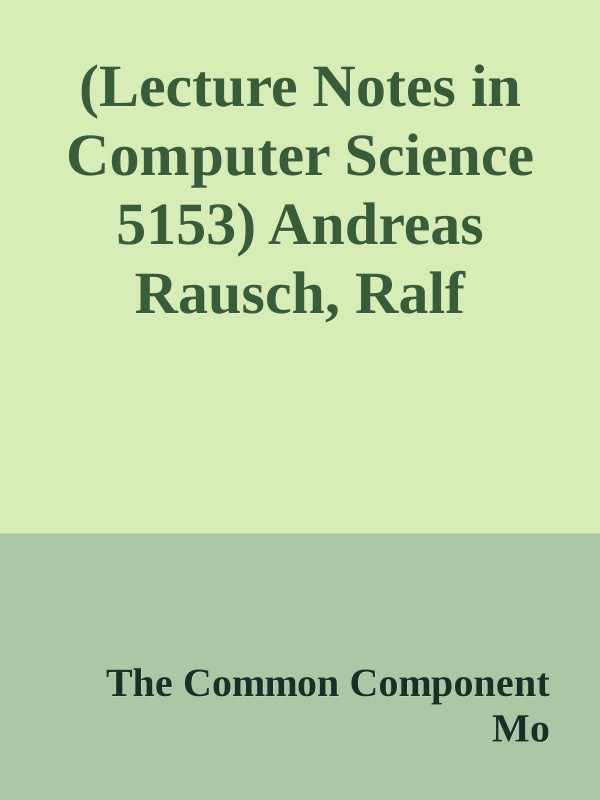
Product details:
ISBN 10: 3540852883
ISBN 13: 9783540852889
Author: Andreas Rausch, Ralf H Reussner, Raffaela Mirandola Frantisek Plasil
This volume defines a common example for modelling approaches of component based systems. It is based on the Dagstuhl research seminar CoCoME (Common Component Modelling Example), which was held from August 1-3, 2007, at Schloss Dagstuhl, Germany. The Common Component Modelling Example makes it possible to compare different approaches and to validate existing models. It serves as a platform for the classification of existing models and approaches and the interchange of research ideas, enabling researchers to focus and to tackle aspects less frequently dealt with. The CoCoME project is an ongoing venture, one of the aims of which is the adoption of the Common Component Modelling Example by the entire component community as a means of comparing and validating their approaches.
The Common Component Modeling Example Comparing Software Component Models 5153 1st Table of contents:
Chapter 1: Introduction to Software Component Models
1.1 Overview of Software Components
1.2 The Evolution of Component-Based Software Engineering
1.3 Why Component Models Matter
1.4 Objectives of This Study
1.5 Structure of the Book
Chapter 2: Fundamentals of Software Component Models
2.1 Defining a Component
2.2 Component-Based Software Engineering Principles
2.3 Key Characteristics of Software Components
2.4 Interfaces, Reusability, and Modularity
2.5 Types of Component Models
Chapter 3: The Common Component Modeling Example (CCME)
3.1 Introduction to the CCME Framework
3.2 Key Features of the CCME
3.3 How CCME Helps in Component Modeling
3.4 Use Cases of CCME
3.5 Challenges and Limitations of CCME
Chapter 4: Comparing Component Models
4.1 Criteria for Model Comparison
4.2 Structural Comparison: Interfaces, Communication, and Data Flow
4.3 Behavioral Comparison: Lifecycle and State Management
4.4 Performance and Scalability Considerations
4.5 Security and Fault Tolerance in Component Models
4.6 Comparing Model Extensibility and Flexibility
Chapter 5: Case Study 1: Component Model A
5.1 Overview of Component Model A
5.2 Architecture and Design Patterns
5.3 Strengths and Weaknesses
5.4 Real-World Applications of Component Model A
5.5 Performance Evaluation
Chapter 6: Case Study 2: Component Model B
6.1 Overview of Component Model B
6.2 Architecture and Design Patterns
6.3 Strengths and Weaknesses
6.4 Real-World Applications of Component Model B
6.5 Performance Evaluation
Chapter 7: Case Study 3: Component Model C
7.1 Overview of Component Model C
7.2 Architecture and Design Patterns
7.3 Strengths and Weaknesses
7.4 Real-World Applications of Component Model C
7.5 Performance Evaluation
Chapter 8: Comparative Analysis of Component Models
8.1 Key Differences and Similarities
8.2 General Findings from the Case Studies
8.3 The Effectiveness of Different Models in Varying Contexts
8.4 Hybrid Approaches to Component Modeling
8.5 Practical Considerations for Selecting a Component Model
Chapter 9: The Future of Software Component Models
9.1 Trends in Software Component Engineering
9.2 Integration with Emerging Technologies (e.g., Cloud, IoT, AI)
9.3 The Role of Automation and AI in Component Modeling
9.4 Predictions for Component Models in the Next Decade
9.5 Research Directions and Open Challenges
Chapter 10: Conclusion
10.1 Summary of Key Findings
10.2 Best Practices for Software Component Modeling
10.3 Final Recommendations for Practitioners
10.4 Future Work
People also search for The Common Component Modeling Example Comparing Software Component Models 5153 1st :
lecture notes in computer science 5153
lecture notes on computer science
lecture notes in engineering and computer science
lecture notes in physics
ap computer science notes pdf

